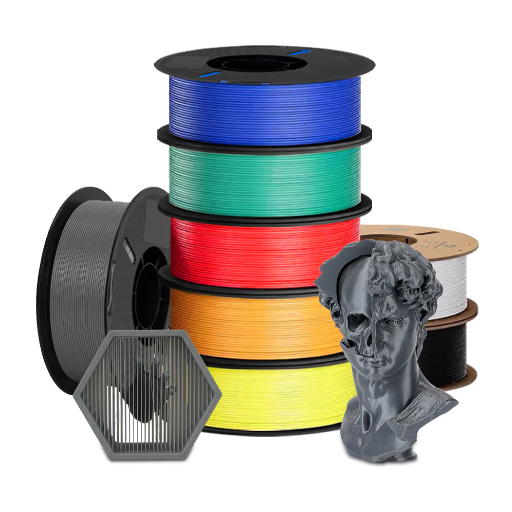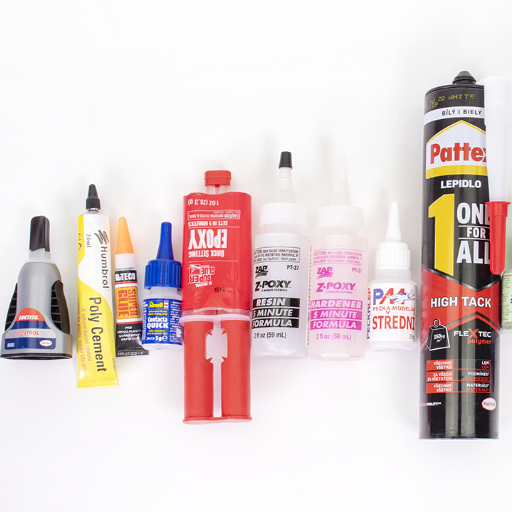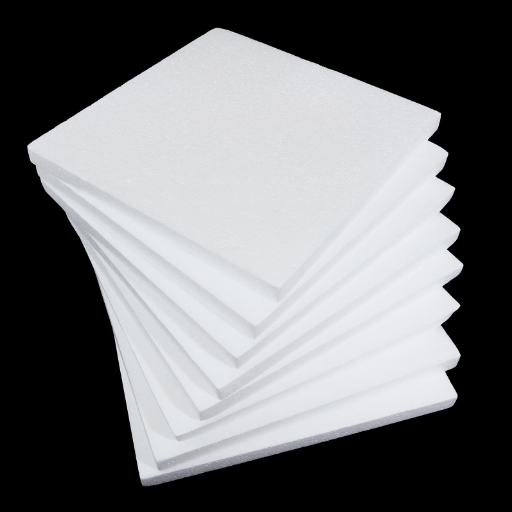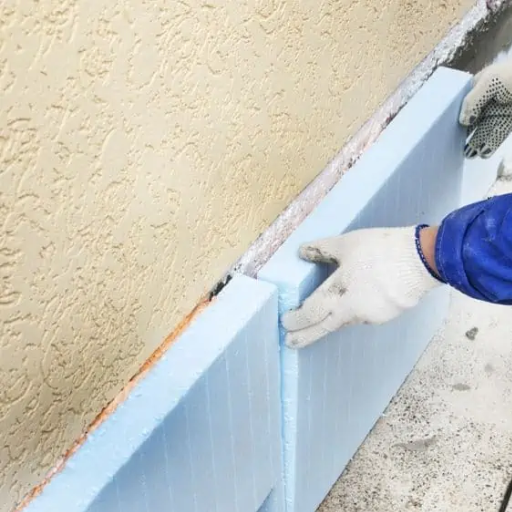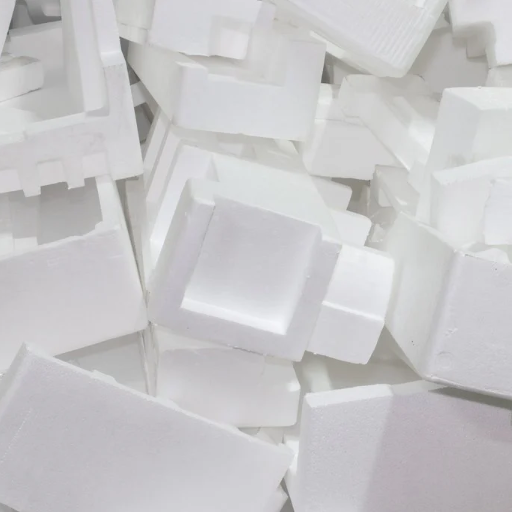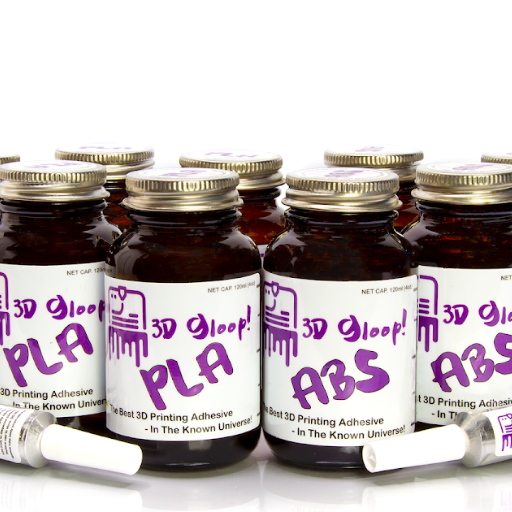Loctite and Super Glue are dominant brands in the adhesive market. They have become renowed due to their strength, versatility and reliability, but they differ in composition, application and performance of tasks. The purpose of this guide is to outline the differences between two adhesives so that you can make an educated decision on which one best fits your requirements.
The article will analyze the adhesives’ chemical properties in depth, their strengths and weaknesses and also the tasks or materials to which they apply. Other factors like application methods, safety guides as well as general everyday practices will also be covered to give you optimal understanding of the products. So by the end of this guide, you will be able to make a decision on which product to go for; Super Glue or Loctite.
What is Super Glue and How Does It Work?

Super Glue is one of the many products based on cyanoacrylate adhesive. It is a very fast-acting, high-strength adhesive that can stick to a wide variety of materials like plastic, metal, wood, and even ceramics. Its chemical composition primarily consists of cyanoacrylate esters which allows it to bond almost instantly when even a bit of moisture is present, such as in the humid air. It works by polymerizing on contact, forming very strong chains that bind the surfaces together. Its versatility and quick curing time make it very suitable for small repairs and general-purpose bonding, but it works best for non-porous materials. It can be less effective with soft or highly porous surfaces.
Introduction to Cyanoacrylate Super Glue
Cyanoacrylate super glue is an adhesive with lightning fast bonding capabilities which is both durable and flexible. It consists of cyanoacrylate monomers that combine rapidly in the presence of even minute doses of moisture. This bond makes molecular chains that securely hold two surfaces to one another. Consequently, it is very efficient in bonding non-porous surfaces, for example, metals, plastics, ceramics, and glass. However, its effectiveness is reduced when trying to bond to porous or flexible services.
Mainly, it contains low curing times, advanced tensile strength, and ease of use which makes it suitable for numerous applications from household repairs and construction to industrial manufacturing. On the contrary, cyanoacrylate adhesives are poor for heat-resistant applications since the bonding strength is weakened under high temperatures. Furthermore, they are not suited for joints exposed to extreme mechanical tension because of the rigid nature of the adhesive. Last but not least, it is indispensable to note that cyanoacrylate superglue should be kept and handled with caution. Otherwise, it is easily affected by moisture in the air. For this reason, it is important to store the glue in a cool and dry place.
Applications and Benefits of Using Super Glue
Cyanoacrylate adhesive, more commonly known as super glue, has exceptional application coverage because of its fast bonding properties. It’s efficient across industries for a reason. Household uses feature ceramic, glassware, and plastic repairs – even crafting. Super glue is widely used in the industry for precise manufacturing in the fields of electronics, automotive, and even medical equipment.
Super glue adheres instantly to a wide range of non-porous substances, which gives it superior tensile strength and makes it incredibly reliable. It’s even capable of binding together vastly different materials – plastic can be attached to glass and metal can be loomed over PVC. The glue can be cleared to dry in no time, which cuts down on time and boosts productivity. The glue comes in several formulations as well, such as gel for vertical application or medical grade for wound closure. Super glue doesn’t come without shortcomings, as users must be cautious regarding high temperatures, flexible materials, mechanical stress, and even over-application. Proper storage will ensure performance.
Understanding the Bonding Process of Super Glue
Super glue is made from cyanoacrylate adhesive and it forms bonds through a process called anionic polymerization. Dry glue will instantly stick when there are even slight traces of moisture. Reacting glue starts forming polymers when it comes in contact with humidity in the air or moisture on a surface. Moisture deficiency causes the bond to break. Due to this property, super glue works best on non-porous surfaces. Such surfaces enable moisture retention which is required for the cum polymerization reaction to occur.
This operation is broken down into three steps. First, an application spreads the adhesive on one or both surfaces. This forms a thin layer of superglue. Second, surface moisture or humid air interacts with the centrally placed glue, which in return activates the polymerization mechanism. The final step occurs while the bond is being made as the super glue is becoming solid. Under ideal circumstances, the bonds created between the surfaces can sustain superglues. However, such conditions cannot be controlled. The strength of the bonds differs due to material compatibility, environmental conditions, temperature, and pressure. Without raising the subject of autonomous devices, applying the glue appropriately is the most critical parameter in achieving the desired conditions for sustaining such bonds.
Exploring Loctite and Its Unique Features
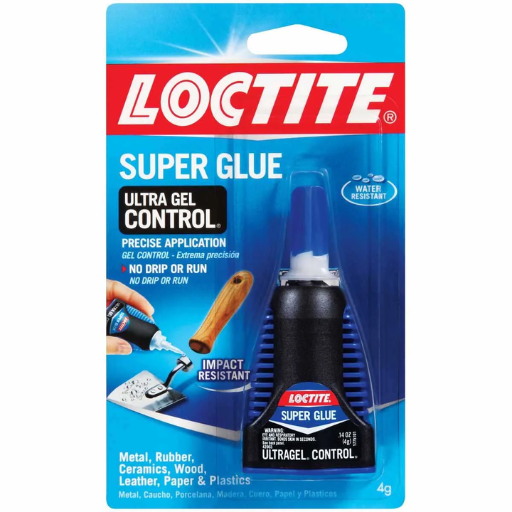
Loctite is Loctite because of the specially made formulas for the adhesives which are used for different applications and challenging environments. The bonding speed to different materials like metals, plastics, and ceramics is one unique feature of Loctite. Its bonding capacity is exceptionally reliable and strong. Furthermore, many formulations of Loctite products provide adequate protection against adverse environmental conditions such as high temperatures, humidity, and chemicals over long periods, making them suitable for extreme environments. This allows Loctite to be used in a wide range of fields including industrial, automotive, and consumer sectors. Desired bonding performance is a function of the level of surface preparation and the method of application which underscores its user focus and high performance outcomes.
Unleashing the Potential of Henkel Loctite Super
Henkel Loctite Super has thrived in so many different areas because of its high-performance adhesive technology. It works for many fields because it features extremely strong bonding plus versatility all at once. It is ideal with metal, plastic, rubber, wood, and even ceramics. One of the most impressive features of Loctite Super is that it bonds instantly. Users can achieve high-strength adhesion within a fraction of a second. Moreover, new formulations improve resistance to extreme temperatures, moisture, and chemicals thus assuring durability and reliability in difficult conditions.
One of the features of Henkel Loctite Super is precision application. This is easily achieved using gel-based or liquid options to perform different tasks. The product works well for rest and larger-scale industrial applications and provides consistent results. Besides, the design is user-friendly, resulting in minimal mess while making it easy to use. This combination of speed, durability against harsh conditions, and ease of use has immeasurable potential for professionals and home improvement enthusiasts.
Specially Formulated Loctite for Different Applications
Loctite guarantees different formulations for different application requirements in various industries. For metal bonding, the Loctite 263 Threadlocker serves as an excellent option. It possesses high strength and great temperature tolerance, making it suitable for heavy-duty industrial work. Another formulation for plastic application, the Loctite Plastics Bonding System, uses advanced cyanoacrylate technology to deliver exceptional adhesion on challenging surfaces. Rubber and flexible materials benefit from the Loctite 480 which is rubber modified and impact and vibration resistant.
Due to its unique formula that does not drip, Loctite Super Glue Gel is highly effective for Pottery/Ceramic repairs. Industries that need to withstand oil, chemicals, and harsh conditions can use Loctite 577 Thread Sealant, as it provides a leak-proof structure. Along with all these varieties, Loctite products are fast-curing, extremely durable, and reliable for all kinds of professionals and DIY owners.
Comparing Loctite with Other Adhesives
In the realm of adhesives, Loctite separates itself remarkably from other brands like Elmer’s and Gorilla Glue because of its target market, speed of curing, and durability. Loctite is engineered for surfaces that require oil and vibration resistance. Commonly known brands like Krazy Glue and Gorilla Glue do not possess these qualities, which makes Loctite the brand of choice during industrial or high-stakes situations.
Loctite also has the advantage of being used in niche situations like repairing high-end machinery that requires sought-after qualities such as reasonable curing time and high adhesion strength to endure harsh conditions. While JB Weld is known for its strong binding epoxy, Loctite blows it out of the water with its versatility and low curing time. It also outperforms Elmer’s in extreme environments. Because of all these reasons, Loctite is the go-to adhesive solution amongst professionals and DIY enthusiasts, regardless of the situation’s intricacy.
Super Glue vs Loctite: Key Differences

The considerations for Super Glue and Loctite differ because each is intended for specific purposes. Loctite is noted for its marks of integration for industrial applications and is more versatile in use than Super Glue, which is simply a cyanoacrylate adhesive that is commonly used for easy bonding of ceramics, light metals, and plastics. While Super Glue is very effective when used with non-challenging surfaces, further to, it disintegrates under intense pressure, extreme temperatures, oil, or vibrations.
Loctite’s attributes of oil and vibration appear to supersede when compared to super glue which is best suited for simple tasks. Moreover, Loctite caters to specific variations for different conditions and its subpar curing times along with the looseness of the adhesives makes it greatly suited to places with harsh conditions. Loctite earns more praise from professionals than superglue, which many people find is more than suitable for simple repairs, as the former saves a considerable amount of time and labor in intricate repairs and high-performance machinery.
Strength and Durability: Superglue vs Loctite
The strength and durability of both Super Glue and Loctite differ greatly from each other which makes both suitable for different purposes. Super Glue is a cyanoacrylate adhesive that bonds very quickly and is well-suited for smooth non-porous surfaces such as ceramics, plastics, and even light metals. Unfortunately, Super Glue is very weak under stressors like vibrations, high temperatures, and oil. Super Glue’s brittle structure makes it unsuitable for high-load applications.
In contrast, Loctite makes specialized formulations that are intended to be used in very demanding and industrial environments. Its adhesives are specifically formulated to withstand oil, moisture, and temperature changes which makes them very durable in demanding situations. Loctite is an expert in retaining adhesion on components that experience vibrations and extreme pressures which makes them a go-to for the automotive, aerospace, and heavy machinery industries. Not only that, Loctite products usually benefit from set curing times and custom-tailored features allowing users to pick the most suitable bond for their needs.
To summarize, Super Glue is ideal for everyday fixes while Loctite is best for intricate industrial work during which reliability and performance is needed the most.
Application on Various Surfaces: Plastic and Non-Porous
Achieving the best adhesion with plastics and other non-porous materials starts with selecting the right adhesive. Super Glue bonds relatively well with polystyrene, acrylic, or ABS, but its performance on PE or PP plastics is compromised without some primers or surface preparation techniques. It is also very brittle, meaning that it does not perform well in flexible or mobile applications.
Loctite, for one, has a greater range of specialized adhesive formulations for different types of plastics and non-porous surfaces which includes plastics like PE and PP. Products such as Loctite Plastics Bonding System use a primer that greatly enhances adhesion which is otherwise weak on low-energy surfaces. Moreover, these Loctite adhesives are formulated to retain their strong bonds when subjected to moisture, thermal expansion, or even vibration, proving superior for industrial applications involving non-porous materials.
In summary, Super Glue may be suitable for simple bonding applications on everyday plastic, but Loctite is the answer for reliable adhesion on the toughest applications on the entire family of plastics and even non-porous materials, especially in harsh conditions.
Advantages of Using Loctite Super Glue vs Super Glue
- Superior Bonding for Low-Energy Surfaces
Loctite Super Glue is designed to bond challenging materials like polyethylene (PE) and polypropylene (PP), which are notoriously difficult for generic superglues. Loctite’s advanced formulations often include primers or additives that enhance adhesion on low-energy surfaces, ensuring a robust and long-lasting bond.
- Versatility Across Applications
While standard super glue is suitable for general-purpose bonding, Loctite Super Glue offers specialized products tailored for industrial and demanding environments. These formulations can handle extreme conditions, including vibrations, moisture exposure, and thermal expansion, making them ideal for both household and heavy-duty applications.
- High Durability in Harsh Environments
Loctite Super Glue is engineered to maintain its bonding integrity under harsh conditions. Whether exposed to water, temperature fluctuations, or constant mechanical stress, it outperforms regular superglue, ensuring reliability and performance longevity.
- Enhanced Applicator Design
Loctite Super Glue products often feature precision applicators for controlled application, reducing mess and ensuring accurate placement, a feature that many standard super glues lack.
- Specialized Formulations
Loctite’s diverse product line includes adhesives tailored for specific materials and tasks, such as its Plastics Bonding System with built-in primers. This versatility offers an edge over generic superglues, which are generally made for basic use cases and lack material-specific enhancements.
Loctite provides a more comprehensive solution for bonding needs, excelling in scenarios where generic superglue might fail due to environmental or material challenges.
Choosing the Right Adhesive for Your Needs

When selecting the ideal adhesive, consider the following key factors:
- Material Compatibility
Determine the specific materials you are bonding (e.g., metal, plastic, rubber). Use adhesives like Loctite specialized formulations that are designed for compatibility with those materials.
- Environmental Conditions
Evaluate the conditions the bond will face, such as exposure to water, extreme temperatures, or UV light. Choose an adhesive formulated to withstand these factors without compromising performance.
- Application Method
For precision work, opt for adhesives with enhanced applicator designs, which allow for controlled and mess-free application.
- Strength and Durability Requirements
Assess the load and stress the bond will endure. For high-strength needs, select adhesives noted for their durability under mechanical stress.
By addressing these considerations, you can ensure a reliable and effective bonding solution tailored to your project’s specific requirements.
Factors to Consider in DIY Projects
When planning a DIY project, several key factors must be assessed to ensure success:
- Project Complexity and Skill Level
Evaluate the complexity of the project in relation to your current skills. Start with manageable tasks if you are a beginner and gradually take on more advanced challenges as your experience grows. Researching tutorials and guides from reliable sources can provide clarity.
- Tools and Materials
Ensure you have the proper tools and materials required for the project. High-quality materials and well-maintained tools contribute to better results. Additionally, selecting the correct adhesive, fasteners, or finishes is paramount for durability and functionality.
- Budget and Time Constraints
Outline your budget upfront, accounting for both materials and potential unforeseen costs. Similarly, allocate sufficient time for the project to avoid rushing, which could compromise quality.
- Safety Precautions
Prioritize safety by using protective gear such as gloves, goggles, and masks when handling tools or chemicals. Make sure your workspace is well-ventilated and organized to minimize risks.
- Environmental Impact
Consider using eco-friendly materials and recycling waste where possible. Reducing the environmental footprint of your project contributes to sustainable practices.
Focusing on these factors allows for a more efficient and satisfactory DIY experience, ensuring the finishing product meets expectations while maintaining safety and staying within constraints.
Understanding Adhesion and Peel Strength
Adhesion is the molecular force that makes two materials with different physical properties bind together. This is very important when selecting adhesives for several different applications. The bond formed is composite of various chemical reactions such as energies of the substrate surface, adhesive surface, adhesive composition, cleanliness among others. Often, surface preparation such as cleaning or abrasion is required which increases bonding area while removing unwanted debris.
The ability of the adhesive to withstand separation is determined by a pulling force that estimates peel strength, which is used primarily with flexible materials such as tapes and laminates. The peel test is done under set conditions where the measure of the resistance of the adhesive bond to loading is taken, commonly in Newtons per meter. The information gathered helps to understand the defeasibility and serviceability of the adhesive to various forms of strain.
The relationship between adhesion and peel strength is the impact of the adhesive composition, curing treatment, and surrounding conditions (temperature and humidity). Understanding these variables is needed in selecting an adhesive that fulfills the sufficiency and durability requirements in actual usage.
Common Mistakes When Using Glue and How to Avoid Them
- Applying Too Much Glue
Overusing glue can lead to weak bonds as excess adhesive creates gaps or fails to cure properly. To avoid this, apply a thin, even layer and remove any excess immediately. Always follow the manufacturer’s recommendations for the specific amount required.
- Not Preparing Surfaces Properly
Adhesive bonds fail when surfaces are dusty, greasy, or uneven. Surface preparation is critical—clean thoroughly, sand rough surfaces, or apply primers if needed to ensure optimal adhesion.
- Using the Wrong Type of Glue
Different adhesives are designed for specific materials and environments. Using an incorrect adhesive may lead to brittle bonds or failure under stress. Check adhesive specifications and select one appropriate for the materials, temperature, and load conditions.
- Ignoring Curing Time
Rushing the curing process weakens the bond by not allowing the adhesive to reach its full strength. Always adhere to curing times and environmental conditions (such as temperature or humidity) indicated on the product label.
- Storing Glue Improperly
Exposure to air, moisture, or extreme temperatures can degrade adhesives. Store glue in its original container, tightly sealed, and in a cool, dry place to extend shelf life and maintain effectiveness.
By addressing these common issues, users can achieve stronger, longer-lasting bonds and ensure the reliable performance of their adhesive applications.
Tips and Tricks for Effective Glue Usage

Preparation of the Surface is Important
Always clean and dry the parts that are going to be joined together. If any dust, grease, or moisture is left behind, it will prevent the adhesives from sticking together permanently.
Apply the Correct Quantity
Be careful to avoid over or underapplying the glue. Use only enough to cover the bonding area without any significant squeeze out which can cause weakening of the bond and unwanted rough surfaces.
Take Note of Environmental Conditions
Carefully select the adhesive type based on the environment. High humidity, extreme cold or heat, and UV light can affect long term performance and so specially rated adhesives for those conditions should be used.
If Required, Use Clamps or Other Supports
To ensure proper alignment and pressure for optimal bonding strength while the glue is curing, use clamps or other temporary supports.
Always Perform a Test Before Complete Use
Always conduct a small test with sample materials before larger projects to confirm bonding strength, curing performance, and compatibility.
Following these, you will be able to achieve the best performance and reliability in adhesive bonds for multiple applications.
Ensuring a Strong Bond with Cyanoacrylate Adhesives
Cyanoacrylate adhesives, commonly known as superglue, rely on a precise combination of application techniques and environmental conditions to deliver optimal bonding performance. To ensure a strong bond:
- Surface Preparation
Clean the bonding surfaces thoroughly to remove oils, dust, or contaminants. Use isopropyl alcohol for cleaning and allow the surfaces to dry completely. Avoid using acetone or other harsh chemicals that may leave residues.
- Controlled Application
Apply a minimal amount of adhesive, as cyanoacrylates cure by reacting with moisture in the air and on the material’s surface. Excess glue can inhibit curing and weaken the bond. For porous or uneven surfaces, use an activator to speed up curing and improve bond strength.
- Clamping for Stability
Hold the parts in position or use light clamping to maintain alignment during curing. While cyanoacrylates bond quickly, achieving full strength may take up to 24 hours depending on the material and environmental conditions.
- Optimal Environmental Conditions
Cyanoacrylates perform best in moderate humidity (40-60%) and at room temperature (65-80°F). Too low humidity slows curing, while excessive moisture may lead to blooming or brittle bonds.
- Material Compatibility
Verify compatibility with the substrate, especially for plastics like polyethylene or polypropylene, which may require a primer. For metals or glass, ensure surfaces are lightly abraded to enhance adhesion.
By adhering to these guidelines, users can maximize the strength, durability, and reliability of cyanoacrylate adhesive bonds in various applications.
Quick Repairs and Instant Bond Techniques
The bonds and joints can be repaired rapidly and instantly because of the special tools, as well as the ultra-dry superglues used in repairs. The most common solutions are superglues, epoxy resins, and UV-cured adhesives. Epoxy glues too offer robust bonds for most repairs, and are slow curing, which makes Cyanoacrylate glues efficient for small-scale repairs. Furthermore, pricing and curing time grants these glues the upper hand over epoxy glues. Cyanoacrylate burns the competition due to its broad range of effectiveness. Superglues remain unrivaled due to their effectiveness range, while resin fixes are best served for weighty structural issues. Curing via UV light grants superglues the advantages of precision and accurate control. This makes them a prime candidate for repairs that need alignment adjustments to be made.
When bonds require additional settings, reinforcing them with techniques such as welding plastic alongside the glue are advised. Proper surface preparation: cleaning, drying, and eliminating oils is paramount. When setting the bonded material remember to factor the item, environmental aspects, and heat and moisture resistance, as these will ensure the longevity of the material.
Maintaining Glue and Proper Storage
Fusion glue is sensitive to structural conditions and its proper maintenance and storage are key to extending its shelf life. Its storage conditions should be an environment with minimum temperatures between 15°C and 25°C because exposure to extreme heat or freezing conditions makes the glue lose its adhesive properties. Prevention is better than cure, so the container should be sealed tightly to prevent air exposure that causes the glue to harden or thicken, and accordingly seal the lid.
Like any other fusion glue, dirt, water, or dust must be prevented from contaminating the glue which will in turn compromise the bonding strength. Sensitive adhesives, more specifically superglue should be stored in airtight containers with a desiccant in order to diminish humidity. Altering conditions when the glue is not ‘fresh’ results in changes in viscosity or texture which completely debars its usability. To make the process smooth, simply check the manufacturer’s guidelines for storage recommendations.
References
Frequently Asked Questions (FAQ)
Q: What is the main difference between Super Glue and Loctite?
A: Super Glue and Loctite are both cyanoacrylates, which are fast-acting adhesives. The main difference lies in their specific formulations and applications. While Super Glue is a versatile adhesive that can be used on a variety of surfaces, Loctite offers specialized adhesives for specific tasks, such as sealing bolts and screws or bonding difficult-to-bond materials.
Q: What is cyanoacrylate and how does it work?
A: Cyanoacrylate, often referred to as CA glue, is a fast-curing adhesive that hardens quickly when exposed to moisture. It forms a strong and durable bond suitable for a variety of applications, including household items and electronics assembly.
Q: Can Super Glue be used on porous and non-porous surfaces?
A: Yes, Super Glue is a versatile adhesive that can bond both porous and non-porous surfaces. However, its effectiveness may vary depending on the substrate. For some porous materials, a gel formulation may be preferred to ensure thorough bonding.
Q: What are the advantages of using Loctite over other adhesives?
A: Loctite offers a range of adhesives with specific formulations for different needs. It is known for its strong and durable bonds, moisture resistance, and ability to bond difficult-to-bond materials. This makes it a preferred choice for professionals and DIY enthusiasts alike.
Q: Is there a specific guide to Loctite Super Glue for beginners?
A: Yes, a comprehensive guide to Loctite Super Glue provides detailed information on its application, curing time, and suitable substrates. This guide is particularly helpful for those new to using adhesives in various projects.
Q: How long does it take for Super Glue and Loctite to cure?
A: Both Super Glue and Loctite typically cure within seconds to a few minutes, due to their fast-curing nature. However, full strength may be achieved in 24 hours, depending on the environmental conditions and the materials being bonded.
Q: Can Super Glue or Loctite be used for outdoor applications?
A: Yes, both adhesives can be used for outdoor applications. Loctite, in particular, resists moisture and temperature changes, making it suitable for outdoor use. Super Glue may also be used, but its longevity can be affected by exposure to environmental elements.
Q: Are there any surfaces that Super Glue or Loctite should not be used on?
A: While both adhesives are versatile, they may not bond well with certain substrates like polyethylene or polypropylene. Additionally, care should be taken when using them on delicate surfaces, as they can cause damage due to their strong bonding properties.
Q: Can Loctite be used in electronics assembly?
A: Yes, Loctite is often used in electronics assembly due to its ability to bond firmly and resist moisture, ensuring the durability of electronic components.
















